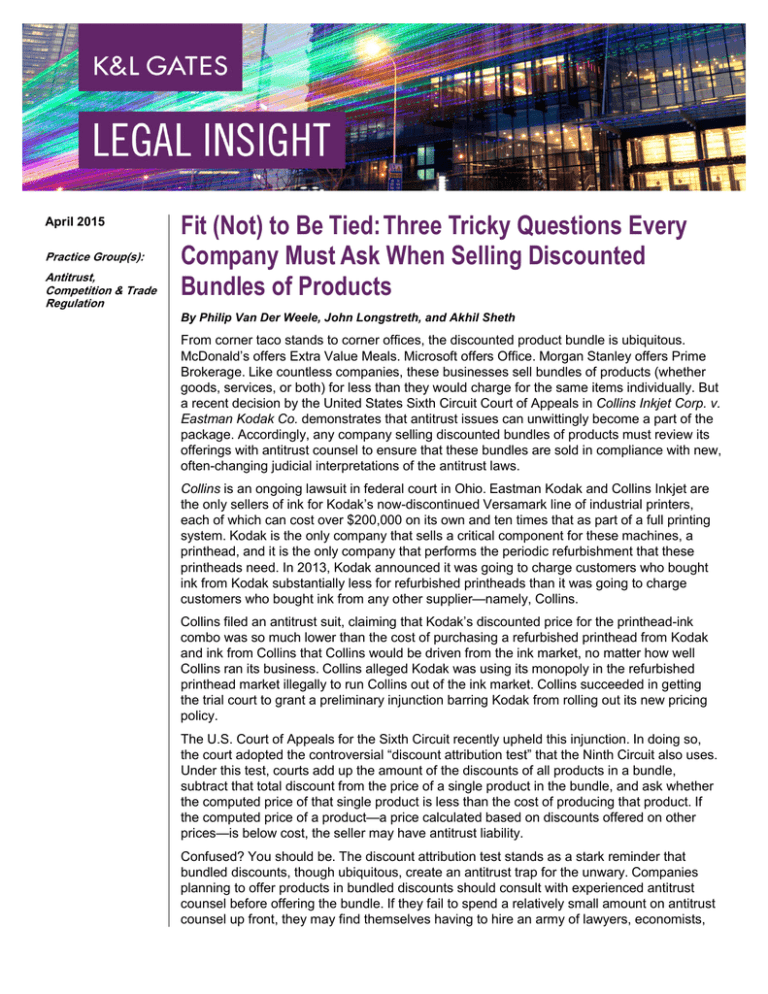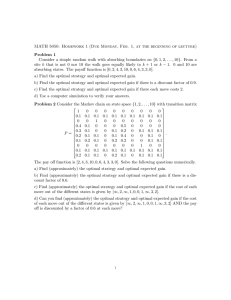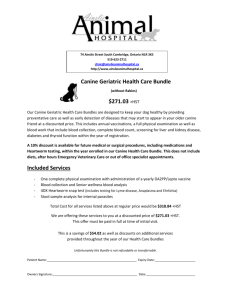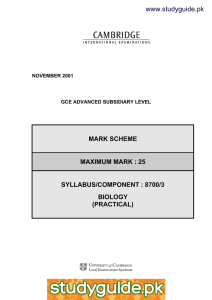
April 2015
Practice Group(s):
Antitrust,
Competition & Trade
Regulation
Fit (Not) to Be Tied: Three Tricky Questions Every
Company Must Ask When Selling Discounted
Bundles of Products
By Philip Van Der Weele, John Longstreth, and Akhil Sheth
From corner taco stands to corner offices, the discounted product bundle is ubiquitous.
McDonald’s offers Extra Value Meals. Microsoft offers Office. Morgan Stanley offers Prime
Brokerage. Like countless companies, these businesses sell bundles of products (whether
goods, services, or both) for less than they would charge for the same items individually. But
a recent decision by the United States Sixth Circuit Court of Appeals in Collins Inkjet Corp. v.
Eastman Kodak Co. demonstrates that antitrust issues can unwittingly become a part of the
package. Accordingly, any company selling discounted bundles of products must review its
offerings with antitrust counsel to ensure that these bundles are sold in compliance with new,
often-changing judicial interpretations of the antitrust laws.
Collins is an ongoing lawsuit in federal court in Ohio. Eastman Kodak and Collins Inkjet are
the only sellers of ink for Kodak’s now-discontinued Versamark line of industrial printers,
each of which can cost over $200,000 on its own and ten times that as part of a full printing
system. Kodak is the only company that sells a critical component for these machines, a
printhead, and it is the only company that performs the periodic refurbishment that these
printheads need. In 2013, Kodak announced it was going to charge customers who bought
ink from Kodak substantially less for refurbished printheads than it was going to charge
customers who bought ink from any other supplier—namely, Collins.
Collins filed an antitrust suit, claiming that Kodak’s discounted price for the printhead-ink
combo was so much lower than the cost of purchasing a refurbished printhead from Kodak
and ink from Collins that Collins would be driven from the ink market, no matter how well
Collins ran its business. Collins alleged Kodak was using its monopoly in the refurbished
printhead market illegally to run Collins out of the ink market. Collins succeeded in getting
the trial court to grant a preliminary injunction barring Kodak from rolling out its new pricing
policy.
The U.S. Court of Appeals for the Sixth Circuit recently upheld this injunction. In doing so,
the court adopted the controversial “discount attribution test” that the Ninth Circuit also uses.
Under this test, courts add up the amount of the discounts of all products in a bundle,
subtract that total discount from the price of a single product in the bundle, and ask whether
the computed price of that single product is less than the cost of producing that product. If
the computed price of a product—a price calculated based on discounts offered on other
prices—is below cost, the seller may have antitrust liability.
Confused? You should be. The discount attribution test stands as a stark reminder that
bundled discounts, though ubiquitous, create an antitrust trap for the unwary. Companies
planning to offer products in bundled discounts should consult with experienced antitrust
counsel before offering the bundle. If they fail to spend a relatively small amount on antitrust
counsel up front, they may find themselves having to hire an army of lawyers, economists,
Fit (Not) to Be Tied: Three Tricky Questions Every Company Must Ask When
Selling Discounted Bundles of Products
and cost accountants after they get sued. Antitrust counsel can guide the company through
three tricky questions that must be addressed before offering a discounted bundle.
1.
Is There Market Power for Any Product in the Bundle?
First, companies need to evaluate whether they have market power for any product they plan
to include in the bundle. To assess whether a seller has such market power, courts look to a
variety of factors, including market share, profit margins, unused production capacity, the
unique nature of the goods or service, and the barriers to entry (such as patents or positive
network externalities) that prevent other companies from entering the market.
Identifying market power can be tricky, and Collins shows why. In looking for markets where
Kodak had market power, who would have thought that a component related to a line of
printers that Kodak had stopped selling four years earlier was the place to start? But
companies are often the primary, if not only, source for the parts needed to repair their
products and hence may have market power in a market for repair parts, even when they
lack such economic power in the market for the product being repaired.
2.
Is the Discount Too Big?
Second, in order to properly apply the discount attribution test, companies need to have a
good handle on the prices and costs of all the products in the bundle. Relevant costs do not
include overhead. Instead, courts look to the average cost of producing a unit after factoring
out such overhead—what economists refer to as the “average variable cost.”
Here is a simple example of how discount attribution might work. Suppose Seller sells three
products called “M” (in which it has market power), “N” (standing for “neutral”), and “T”
(standing for the “target” product that may get Seller into trouble, and which, in antitrust
jargon is sometimes referred to as the “tied” product—the product for which Seller is
allegedly trying to eliminate competition by leveraging its power with product M). If you
bought each of M, N, and T separately, you would pay $100, but if you buy them in a bundle,
the cost will be $85—in other words, the aggregate discount of the bundle is $15. Suppose
further that T sells for $30 outside the bundle, and the average variable cost of producing T
is $20. The $15 aggregate discount gets “attributed” to T, which means it gets subtracted
from the $30 price of T, resulting in a new net price for T of $15 ($30 - $15 = $15). Because
that $15 is below the $20 average variable cost of T, Seller is considered to be selling T
below cost and may be subject to an expensive antitrust claim.
Without going through the algebra here, companies should understand that discount
attribution can result in a computed price below cost, even if the company is separately
selling each of the goods above its cost, and even if the price of the bundle is greater than
the sum of the costs of all the goods in the bundle. With sales of individual products,
companies lose money when they sell below cost, and so they are almost certainly aware of
when they do so and can thereby avoid antitrust liability. But with discounted bundles, a
company can unwittingly run afoul of the antitrust law even if it is running a profit. Welcome
to the wacky world of discount attribution.
2
Fit (Not) to Be Tied: Three Tricky Questions Every Company Must Ask When
Selling Discounted Bundles of Products
3.
What Is the Reason for the Bundled Discount?
Third and finally, companies with potentially problematic bundles need to identify (and,
ideally, document) why they are offering these discounts. This is important because the
Collins court left the door open for companies that sell a bundle below cost under the
discount attribution test to nonetheless escape liability by arguing that the bundle “has
procompetitive effects, or, alternatively, has a valid business justification.” The court did not
expand on this, but other courts have previously noted that there are many good reasons
why companies might use discounted bundles. For example, discounted bundles can save
distribution and consumer transaction costs and allow companies to capitalize on economies
of scale. They can also help instill customer loyalty, increase demand in lieu of advertising,
encourage customers to try a new product, or help a company enter a new market. It is
uncertain what showing a company must make to use one or more of these justifications as
a defense, but the strength of this shield is best examined before it is needed.
In sum, before offering a bundled discount, a company should ask whether it is at least
possible that it has market power for any product in the bundle. If the answer is “yes,” then
the company should consult with antitrust counsel to refine its analysis on market power, to
assess the relation between prices and costs, taking into account the discount attribution
calculation, and to assess the business justifications for the bundled discount. Based on this
consultation, the company can appropriately decide that it does not face liability, that it needs
to adjust the price of the bundle, or that it can live with the risk of antitrust liability. Absent this
consultation, companies risk having their bundles tie them up in antitrust lawsuits.
Authors:
Philip Van Der Weele
phil.vanderweele@klgates.com
+1.503.226.5727
John Longstreth
john.longstreth@klgates.com
+1.202.661.6271
Akhil Sheth
akhil.sheth@klgates.com
+1.310.552.5564
3
Fit (Not) to Be Tied: Three Tricky Questions Every Company Must Ask When
Selling Discounted Bundles of Products
Anchorage Austin Beijing Berlin Boston Brisbane Brussels Charleston Charlotte Chicago Dallas Doha Dubai Fort Worth Frankfurt
Harrisburg Hong Kong Houston London Los Angeles Melbourne Miami Milan Moscow Newark New York Orange County Palo Alto Paris Perth Pittsburgh
Portland Raleigh Research Triangle Park San Francisco São Paulo Seattle Seoul Shanghai Singapore Spokane
Sydney Taipei Tokyo Warsaw Washington, D.C. Wilmington
K&L Gates comprises more than 2,000 lawyers globally who practice in fully integrated offices located on five
continents. The firm represents leading multinational corporations, growth and middle-market companies, capital
markets participants and entrepreneurs in every major industry group as well as public sector entities, educational
institutions, philanthropic organizations and individuals. For more information about K&L Gates or its locations,
practices and registrations, visit www.klgates.com.
This publication is for informational purposes and does not contain or convey legal advice. The information herein should not be used or relied upon in
regard to any particular facts or circumstances without first consulting a lawyer.
© 2015 K&L Gates LLP. All Rights Reserved.
4








